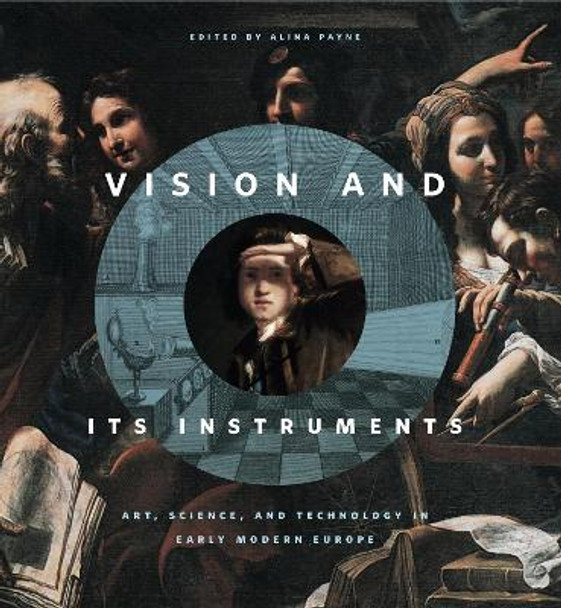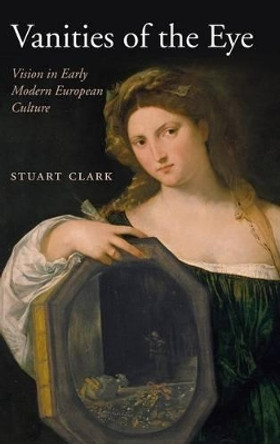Description
Starting with Brunelleschi's invention of perspective and Galileo's invention of the telescope-two inaugural moments in the history of vision, from two apparently distinct provinces, art and science-this volume of essays by noted art, architecture, science, philosophy, and literary historians teases out the multiple strands of the discourse about sight in the early modern period. Looking at Leonardo and Gallaccini, at botanists, mathematicians, and artists from Dante to Durer to Shakespeare, and at photography and film as pointed modern commentaries on early modern seeing, Vision and Its Instruments revisits the complexity of the early modern economy of the image, of the eye, and of its instruments. The book explores the full range of early modern conceptions of vision, in which mal'occhio (the evil eye), witchcraft, spiritual visions, and phantasms, as well as the artist's brush and the architect's compass, were seen as providing knowledge equal to or better than newly developed scientific instruments and practices (and occasionally working in conjunction with them). The essays in this volume also bring a new dimension to the current discourse about image production and its cultural functions.
About the Author
Alina Payne is Alexander P. Misheff Professor of History of Art and Architecture at Harvard University.
Reviews
"The book's subject is also part of the experience of reading it: the generous provision of illustrations offers patterns of analogy and juxtaposition that present the reader with their own epistemic images. Payne's introduction proposes that Renaissance art and science conceived of sight as performance and event. In the complex acts of seeing performed in these essays, and those they encourage in the reader, the book illustrates as well as argues its own propositions."
-Kathryn Murphy Apollo Magazine
"A highly rewarding volume, brimming with exciting ideas and findings. It is also beautifully illustrated."
-Stuart Clark Renaissance Quarterly
"Originating in the seemingly disconnected provinces of art and science with the development of perspective by Filippo Brunelleschi and of the telescope by Galileo Galilei, these carefully textured analyses of vision continue the conversation from the processes of image making and reception to the physiology of the body and the mechanics of technology. Beyond the predictable methodological and disciplinary concerns, these authors incorporate the range of early modern cultural and religious considerations of vision, including mal occhio (evil eye), witchcraft, spiritual visions, and phantasms as they extend the early-20th-century debate between the objects being seen versus the process of seeing."
-Choice
"Any scholar who is seriously interested in the intertwined histories of art and science, the scientific revolution, the philosophy of science, the history of the idea of objectivity, the concept of nature, the theory of art, the role of photography in art history, the limits of visibility, the place of vision in Dante, vision and the visionary, the epistemology of drawing, theories of the imagination, botanical illustration, semiotics, aesthetics, and optics (among many other related topics) will need to read this beautifully designed, copiously illustrated, and challenging collection of dovetailing essays gathered by the estimable Alina Payne. Taken together, these essays point toward a synthetic understanding of the history of vision, to which the history of art belongs."
-Paul Barolsky,University of Virginia
"This remarkable collection of essays, gathered together with an illuminating introduction by Alina Payne, ranges from Dante to Alfred Hitchcock, from Leonardo da Vinci to Marcel Duchamp. Yet, though the particular focus continually shifts, the central questions remain the same: What is the relationship between seeing and knowing? Between image and reality? Between art and science? Vision and Its Instruments is an important book for anyone interested in these questions and in the particular changes that Renaissance art brought to the representation of the visible and invisible world."
-Stephen Greenblatt,winner of the 2012 Pulitzer Prize and 2011 National Book Award for The Swerve: How the World Became Modern and author of Will in the World: How Shakespeare Became Shakespeare
"Just as Leonardo da Vinci exemplifies dual breakthroughs during the early modern period in both observation and representation of nature, this interdisciplinary volume addresses both revolutions analytically to consider 'sight as performance.' By assembling contributions from leading scholars in both history of science and history of art, including several notable Leonardo experts, these essays explore vision itself and contemporary understandings of visuality at the moment when sight and visual knowledge were expanded by new instruments (telescopes, microscopes, and the early camera obscura). Led by editor Alina Payne, Vision and Its Instruments also examines challenges to artistic verisimilitude and to the emerging concept of objectivity-through visions and through problems of picturing invisible forces and concepts. Artworks studied include sculpture as well as painting, and modern film and photography address lingering interpretive issues. This outstanding, coherent volume reformulates early modern intellectual issues pertaining to both vision and visual art. It will contribute richly to further reconsiderations of the 'visual turn' in contemporary culture."
-Larry Silver,University of Pennsylvania
"An iridescent florilegium of contemporary investigations into the science of visual art and the artful visuality of science."
-Tristan Weddigen,University of Zurich
"Handsomely produced and beautifully illustrated, Vision and its Instruments challenges the modern dichotomy between art and science. Assembling authoritative essays by scholars in early modern studies, it shows that architects, designers, and painters were engaged in projects that ran parallel to, and often overlapped with, the work of some of the most important naturalists of the period as they grappled with a shared problem: how to grasp the truths that underpinned natural phenomena and how to communicate them to others."
-Katharine Park,Harvard University
"Alina Payne and the polymath contributors to Vision and Its Instruments open new perspectives on the art and the science of vision. Artists, botanists, zoologists, and astronomers mix freely in this fascinating history. We learn about prosthetic technologies of sight, about physiognomies shared by plants and people, and about brushes and fingers with brains and libido. Did you know how fingertips can see the shape of color? Or how quincuncial and other naturally recurring patterns underpin a natural language of ornament and construction? I didn't before reading Vision and Its Instruments."
-Philip Sohm,University of Toronto
"The famous image of a blind man 'seeing' with the help of two sticks-devised by Rene Descartes-emblematically illustrates the fact that vision is fundamentally determined by instruments. The significance of the comprehensive nature and expansive range of these instruments is brilliantly demonstrated by the essays in this book. Their interest ranges from optical devices and techniques of the observer (that is, the more receptive aspects of seeing) to the formative 'epistemic concepts' and the creative acts of the artist who, with only the tip of the brush, makes the invisible visible, bringing Descartes's argument about the blind man's stick full circle. This new approach to vision and its instruments not only supplements the most recent methodological challenges of the object, materiality, and agency but also presents a spectrum of the different 'scientific cultures' of art history and other disciplines concerned with the visual in Europe and the United States."
-Ulrich Pfisterer,Ludwig Maximilian University of Munich
"The question shared by all of the interesting contributions to this volume concerns sight itself: What can be seen, how far, how well? Alina Payne has collected twelve excellent essays on the fundamental cognitive problems that vision has posed for both science and art from Galileo's discoveries of the moon's surface to the present day. The contributors-historians of science and art, well-known specialists in their fields, working in the United States, Germany, the United Kingdom, Italy, and Switzerland-effectively communicate the results of their recent research. The volume's brilliant illustrations heighten the pleasure that it will bring to the reader."
-Oskar Batschmann,University of Bern and Swiss Institute for Art Research
"I would recommend that anyone interested in the nexus between art and science in the early modern period look at this collection and admire and delight in the challenges these essays provide."
-Judith Collard Parergon
Book Information
ISBN 9780271063898
Author Alina Payne
Format Hardback
Page Count 304
Imprint Pennsylvania State University Press
Publisher Pennsylvania State University Press
Weight(grams) 1678g
Dimensions(mm) 254mm * 229mm * 28mm




